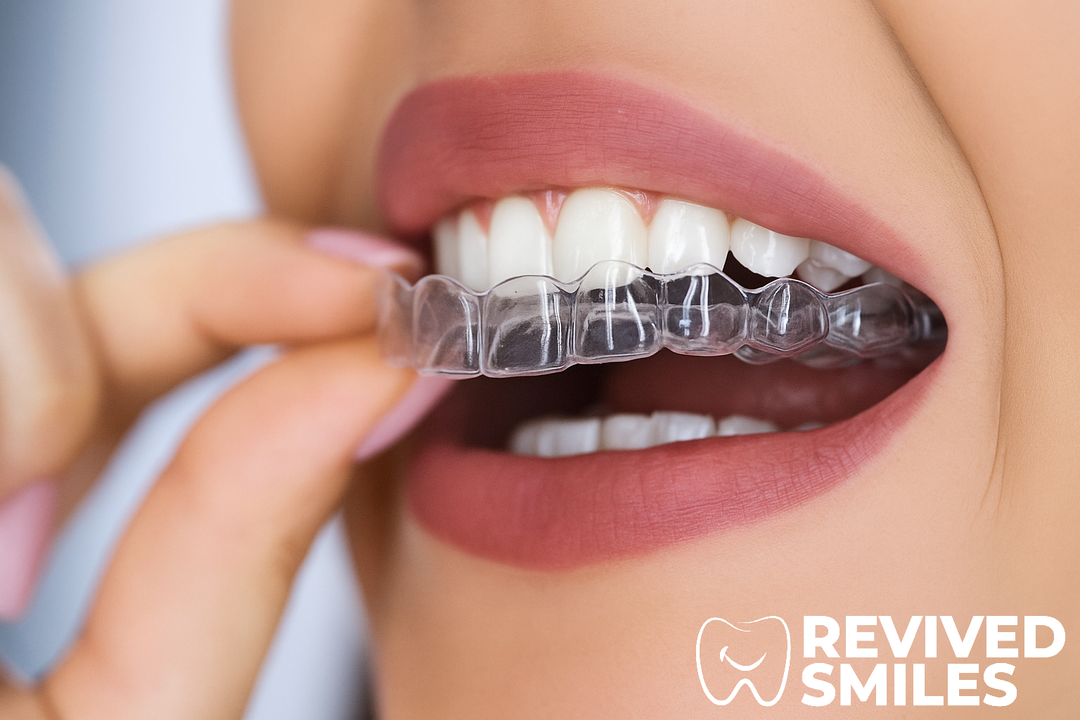Prótesis parcial vs. puente: ¿cuál es la mejor opción para reemplazar los dientes faltantes?

La falta de un solo diente puede hacer más que arruinar tu sonrisa: puede afectar tu masticación, tu habla y tu confianza, especialmente si aún tienes dientes sanos. Si a eso le sumas la falta de varios dientes, el desafío se agrava.
¿La buena noticia? Las opciones modernas de reemplazo dental nos permiten restaurar tanto la función como la apariencia de una manera increíblemente natural.
Pero cuando se trata de elegir entre un puente o una dentadura parcial, la decisión no siempre es fácil.
Tanto los puentes dentales como las prótesis parciales tienen sus ventajas. Algunos ofrecen una solución permanente, mientras que otros ofrecen mayor flexibilidad. La mejor opción depende de sus necesidades, su salud bucal y la cantidad de dientes que vaya a reemplazar.
Analicemos cada opción, incluidas las dentaduras postizas parciales, una al lado de la otra, para que pueda encontrar la que mejor se adapte a su sonrisa.
Introducción a los aparatos dentales
Los aparatos dentales están diseñados para reemplazar dientes faltantes , restaurar la salud bucal y mejorar la apariencia de la sonrisa. Dos opciones populares para reemplazar dientes faltantes son los puentes dentales y las prótesis parciales.
Un puente dental es un aparato fijo que consiste en uno o más dientes postizos unidos a dos coronas dentales, que posteriormente se cementan sobre los dientes adyacentes. Por otro lado, una prótesis parcial es un aparato removible que reemplaza uno o más dientes faltantes.
Tanto los puentes dentales como las prótesis parciales pueden utilizarse para reemplazar piezas dentales faltantes, pero presentan diferentes ventajas y desventajas. Por ejemplo, los puentes dentales son más permanentes y pueden durar muchos años, mientras que las prótesis parciales son removibles y pueden requerir reemplazos con mayor frecuencia.
Por qué es importante reemplazar los dientes faltantes
Cuando perdemos uno o más dientes, no se trata solo de un problema estético. Con el tiempo, los dientes naturales restantes pueden desplazarse, provocando una desalineación de la mordida. La pérdida de dientes también puede causar deterioro óseo y cambios en la estructura facial.
Reemplazar los dientes faltantes ayuda a sostener el tejido de las encías, mantener la presión de mordida adecuada y proteger los dientes restantes del desgaste excesivo.
Además, el impacto emocional de la pérdida de dientes naturales, especialmente los frontales, puede ser considerable. Por eso es tan importante encontrar los aparatos dentales adecuados para restaurar tanto la forma como la función. Los dentistas desempeñan un papel crucial al evaluar y recomendar las mejores opciones de reemplazo dental para mantener la salud bucal.
¿Qué es una dentadura parcial?
Las prótesis parciales son aparatos dentales removibles que rellenan los espacios causados por la falta de dientes. A diferencia de las prótesis completas , que reemplazan una fila completa, las prótesis parciales están diseñadas para funcionar con los dientes existentes, utilizando ganchos metálicos o accesorios de precisión para mantenerlos en su lugar.
Encontrará varios tipos de dentaduras postizas parciales removibles :
-
Prótesis parciales flexibles elaboradas a partir de una base de color goma de mascar que se mezcla de forma natural.
-
Opciones de metal fundido para mayor durabilidad.
-
Prótesis acrílicas parciales , que a menudo se utilizan como soluciones temporales.
Estas prótesis dentales suelen incluir dientes artificiales montados sobre una base que se asienta a lo largo de la línea de las encías. Son populares para personas con varias piezas dentales faltantes que aún conservan dientes sanos.
¿La mayor ventaja? Son no invasivas, asequibles y fáciles de ajustar. Si sus dientes restantes se desplazan o su salud bucal cambia, su prótesis parcial puede modificarse según corresponda.
Tipos de prótesis parciales
Existen varios tipos de prótesis parciales disponibles, incluyendo prótesis de metal fundido, prótesis acrílicas, prótesis flexibles e incluso puentes dentales tradicionales. Las prótesis de metal fundido están hechas de metal y son duraderas.
Las prótesis parciales acrílicas están hechas de plástico y son más económicas que las de metal fundido. Las prótesis parciales flexibles están hechas de un material flexible y son cómodas de usar. Las prótesis parciales implantosoportadas se fijan a los implantes dentales y proporcionan un ajuste seguro y estable.
Las prótesis parciales pueden utilizarse para reemplazar uno o más dientes faltantes y pueden personalizarse para que coincidan con el color, la forma y el tamaño de los dientes restantes. Además, pueden utilizarse para reemplazar varios dientes faltantes y pueden fijarse a los dientes adyacentes mediante ganchos metálicos o accesorios de precisión.
¿Qué es un puente dental?
Un puente dental es un aparato fijo que consiste en un diente postizo fijado mediante coronas dentales a los dientes a ambos lados del espacio, conocidos como dientes pilares. Este puente crea un puente, creando una apariencia uniforme.
Existen algunos tipos principales de puentes dentales tradicionales :
-
Puentes tradicionales : utilizan dos coronas en los dientes adyacentes para sostener el reemplazo.
-
Puentes voladizos : se utilizan cuando solo hay un diente de soporte disponible.
-
Puentes Maryland (también conocidos como puentes unidos con resina ): se fijan mediante alas de metal unidas a la parte posterior de los dientes naturales .
Otra opción más avanzada es un puente implantosoportado, que utiliza implantes dentales en lugar de dientes reales como soporte. Son especialmente útiles si sus otros dientes no son lo suficientemente fuertes para el soporte tradicional o si le faltan varios seguidos.
Dado que un puente fijo está fijado de forma permanente, ofrece una solución duradera. No se retira por la noche y puede restaurar la función masticatoria casi por completo.
Comparación entre prótesis parciales y puentes

Entonces, ¿cómo se comparan los puentes y las dentaduras parciales?
Las prótesis parciales son más económicas y flexibles. Son fáciles de ajustar y reemplazar, especialmente para quienes tienen varias piezas dentales faltantes en diferentes zonas, siempre que haya dientes sanos cerca.
No necesita dientes adyacentes sanos para sujetarlos. Las prótesis parciales son más económicas y flexibles, mientras que los puentes fijos, como los permanentes, ofrecen mayor estabilidad y una sensación natural.
Los puentes dentales, por otro lado, se sienten y funcionan de forma más parecida a los dientes naturales. Son estables, tienen un aspecto realista y no se mueven al comer. Sin embargo, requieren modificar los dientes existentes, lo cual puede no ser ideal para todos.
La elección entre dentaduras postizas parciales y puentes depende de varios factores, incluidos el costo, la durabilidad y el estado de los dientes restantes.
A continuación se presentan algunas diferencias clave más a tener en cuenta:
-
Costo : Las prótesis parciales removibles suelen ser más económicas. Un puente fijo tradicional es más caro, pero puede durar más.
-
Durabilidad : Los puentes , especialmente los de porcelana fundida , pueden durar de 10 a 15 años o más. Las prótesis parciales pueden requerir reemplazo después de 5 a 8 años.
-
Mantenimiento : Los puentes se limpian como los dientes reales , mientras que los parciales deben retirarse todas las noches para su limpieza.
La cantidad de dientes restantes , el estado de los dientes adyacentes y la ubicación del espacio (como dientes posteriores o frontales ) influyen en la mejor opción. En definitiva, las preferencias personales influyen significativamente a la hora de decidir qué opción es la más adecuada para usted.
Escenarios de la vida real: ¿Qué funciona mejor?
Si solo le falta un diente y los dientes adyacentes son fuertes, un puente tradicional o incluso uno de resina podría ser la solución ideal. Es discreto, se fija y se siente increíblemente natural.
Pero supongamos que le faltan varios dientes repartidos por la boca. En ese caso, las prótesis parciales le brindan mayor flexibilidad y evitan el trabajo excesivo en otros dientes.
Para pacientes con enfermedad periodontal o caries en los dientes pilares, los puentes con un diente postizo podrían no ser viables. Una prótesis parcial removible evitaría la tensión en los dientes adyacentes afectados.
Y para quienes buscan un resultado estable y de alta calidad sin tocar los dientes existentes, un puente sobre implantes ofrece una excelente solución, especialmente cuando la densidad ósea permite que los implantes anclen los dientes de reemplazo. Un puente sobre implantes consiste en colocar un implante dental en el hueso maxilar para proporcionar una base estable para los dientes de reemplazo.
Consideraciones sobre el estilo de vida y los cuidados a largo plazo
Tu preferencia personal es fundamental. A algunas personas no les importa quitarse la prótesis parcial cada noche. Otras prefieren la comodidad de un puente que se mantiene en su lugar.
Si está a menudo en movimiento, un puente fijo requiere menos cuidados a lo largo del día. Pero si planea someterse a un tratamiento dental en el futuro o le preocupa el tejido gingival, la adaptabilidad de una prótesis parcial podría ser más atractiva.
También es importante considerar cómo su decisión afecta su salud bucal con el tiempo. Los puentes requieren el uso regular de hilo dental debajo del diente postizo, mientras que las prótesis parciales requieren una limpieza diaria fuera de la boca. Ambos deben recibir mantenimiento para prevenir caries, enfermedades periodontales y el desgaste de los dientes restantes. También es importante obtener un presupuesto de su dentista para comprender las implicaciones financieras de su decisión.
Y no lo olvides: incluso con los mejores aparatos dentales, las revisiones periódicas con un profesional dental son esenciales.
El costo de los puentes dentales y las dentaduras postizas parciales
El costo de los puentes dentales y las dentaduras parciales puede variar según el tipo de aparato, los materiales utilizados y la complejidad del procedimiento.
En promedio, el costo de un puente dental, especialmente los permanentes, puede oscilar entre $1,000 y $5,000, mientras que el de una prótesis parcial puede variar entre $500 y $2,500. Sin embargo, el costo de los puentes dentales y las prótesis parciales puede ser mayor o menor, según las necesidades individuales y la ubicación de la clínica dental.
También es importante tener en cuenta que el seguro dental puede cubrir parte o la totalidad del costo de los puentes dentales y las dentaduras postizas parciales, y que puede haber opciones de financiamiento disponibles para ayudar a que el costo sea más asequible.
Además, el costo de los puentes dentales y las dentaduras parciales debe considerarse en el contexto del costo total del reemplazo de dientes, incluido el costo de los implantes dentales, las coronas y otros procedimientos restauradores.
Al considerar todos estos factores, las personas pueden tomar una decisión informada sobre qué opción de reemplazo dental es mejor para ellos.
Reflexiones finales: Cómo tomar la mejor decisión
No existe una solución universal en el debate entre prótesis parciales y puentes, ya que las preferencias personales son fundamentales. Lo más importante es su caso específico, especialmente en lo que respecta a sus dientes naturales, sus objetivos y el consejo de un profesional dental de confianza.
Aquí tienes una guía rápida:
-
Elija dentaduras postizas parciales si necesita una forma flexible y rentable de reemplazar los dientes faltantes , especialmente si tiene varios dientes faltantes o tiene dientes circundantes más débiles .
-
Opte por un puente dental si le faltan solo unos pocos dientes adyacentes y desea una solución más permanente que se vea y se sienta como dientes naturales .
-
Considere un puente soportado por implantes si desea estabilidad a largo plazo sin depender de sus dientes existentes .
Si aún tiene dudas, hable con su dentista sobre sus implantes dentales y otras opciones. Le ayudará a evaluar su presupuesto, su salud bucal y sus objetivos a largo plazo.





Dejar un comentario